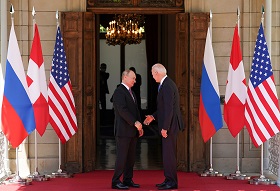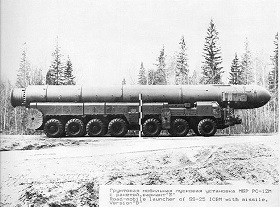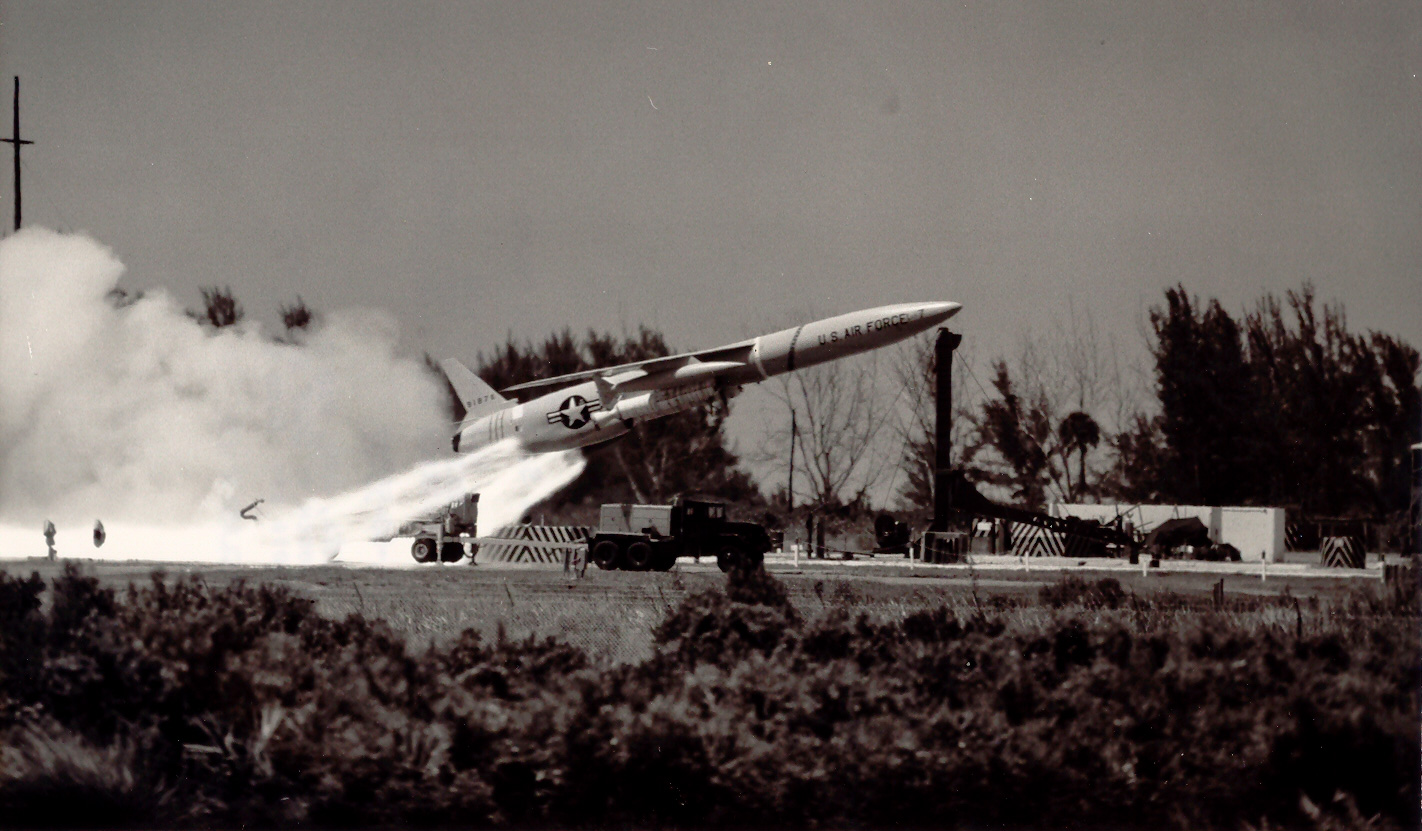1. See, for instance, the statement by President of the Russian Federation Dmitry Medvedev concerning plans to deploy Euro Missile Defence in 2011. See: Statement in Connection with the Situation Concerning the NATO Countries’ Missile Defence System in Europe. November 23, 2011. Gorki, Moscow Region President of Russia URL: http://en.kremlin.ru/events/president/news/13637
2. U.S.–Russia TMD exercises were stopped after Russia recognized the self-proclaimed republic of South Ossetia, which was unacceptable for western countries.
3. Under Para. 1 of Article V of the ABM Treaty, “Each Party undertakes not to develop, test, or deploy ABM systems or components which are sea-based, air-based, space-based, or mobile land-based” See: Treaty Between The United States of America and The Union of Soviet Socialist Republics on The Limitation of Anti-Ballistic Missile Systems (ABM Treaty). 1972 г. UN website: URL: https://www.un.org/ru/documents/decl_conv/conventions/pdf/abm.pdf.
4. Based on the experience of the 1997 U.S.–Russia agreements (that never went into force) on delimitating strategic and tactical missile defence.
5. Even though Republicans slightly outnumber Democrats in the Senate (50 vs. 48), two independent senators Angus King and Bernie Sanders are close to Democrats in their views.
6. U.S. representatives suggested something similar to Russia during the “two + two” consultations in October 2007. See: National Academy of Sciences 2021. Regional Ballistic Missile Defense in the Context of Strategic Stability. Washington, DC: The National Academies Press. https://doi.org/10.17226/24964, p. 89.
7. For instance, the Budget Estimates Overview prepared annually by the Missile Defense Agency covers the plans for the agency’s development one year ahead. Even though the Missile Defense Review does reflect the long-term missile defence plans of a specific Administration (say for the next 5–10 years), they, as a rule, are subjected to major adjustment over time. Various reviews from the relevant agency or the U.S. Department of Defense merely reflect the point of view of the executive branch, which does not always coincide with the opinion of Congress, which is known to have exerted major influence in shaping the country’s military programmes.
8. Technically, cooperation may be resumed either if the United States adopts Russia’s moratorium of deploying intermediate and shorter-range missiles in Europe, or if such an agreement is achieved on intermediate and shorter-range missiles, since past TMD exercises were possible thanks to the INF Treaty, which eliminated those weapons systems that could be intercepted in the TMD.
9. It was under the pretext of defence against limited and accidental nuclear missile strikes from “rogue states” that the United States withdrew from the ABM Treaty in 2002 and started building its European missile defence segment. For more on the European Missile Defence System as a factor in U.S.–Russia relations, see: V. Klimov. “The European Missile Defense System as a Factor in Russia–U.S./NATO Relations.” Mirovaya ekonomika i mezhdunarodnye otnosheniya (Global Economy and International Relations). 2021, Vol. 65 (10), pp. 103–111. https://doi.org/10.20542/0131-2227-2021-65-10-103-111.
In the wake of the U.S. withdrawal from the ABM Treaty in 2002, missile defence has come to be a contributing factor to military and political tensions in U.S.–Russia relations. Russian officials have repeatedly referred to missile defence, claiming it could be a threat to the country’s potential of nuclear deterrence [1], which meant that additional steps needed to be taken to bypass an adversary’s missile defence systems. All this made sure that missile defence has inevitably made a comeback as one of the most pressing issues in arms control.
However, Russia’s official rhetoric accompanying the demolition of the ABM Treaty was surprisingly restrained. In his December 2001 statement on the U.S. withdrawal from the Treaty, the Republican President George W. Bush emphasized, “Today’s Russia is not our enemy but a country in transition with an opportunity to emerge as a great nation, democratic, at peace with itself and its neighbors.” Washington’s official policies did not rule out building partner relations with a new Russia to “address today’s threats and pursue today’s opportunities.” Russia, in turn, responded to the decision of the United States rather calmly. President Vladimir Putin said that “the decision made by the President of the United States does not pose a threat to the national security of the Russian Federation” because, among other things, “Russia, like the U.S. and unlike other nuclear powers, has long possessed effective anti-missile defence penetration aids.”
Besides, at the outset, the dissolution of the ABM Treaty had little effect on U.S.–Russia cooperation in this mutually sensitive area. U.S.–Russia–NATO Theater Missile Defence (TMD) exercises continued until 2008 [2], while the parties never intended to abandon plans to expand cooperation (for instance, on the Data Exchange Center). It was only 16 years later when Moscow said the U.S. withdrawal from the ABM Treaty was an incentive for the development and deployment of Russia’s newest strategic offensive weapons “with the potential to overcome even those missile defence systems that have not yet been designed.”
The Ukraine crisis of 2014 has sent U.S.–Russia relations on another downward spiral. Negotiating arms control issues have become much more problematic, as the parties were increasingly citing grievances over compliance with important treaties. These negative trends resulted, among other things, in Donald Trump’s administration withdrawing from the Intermediate-Range Nuclear Forces Treaty (INF) in 2019 and from the Treaty on Open Skies (TOS) in 2020 in a unilateral fashion.
With the arrival of the Democrat Joe Biden in the White House, hopes for revitalizing arms control, including the dialogue on missile defence, were revived. To recap, in 2001, then-senator Joe Biden vehemently opposed the U.S. withdrawal from the ABM Treaty, calling this step “a serious mistake.” He believed the U.S. Administration “has not offered any convincing rationale for why any missile defence test it may need to conduct would require walking away from a treaty that has helped keep the peace for the last 30 years.”
Joe Biden is rather professional in his understanding of arms control issues, something he has developed through his long tenure under the Obama administration. These are grounds for certain optimism, and it also sets the current White House occupant apart from Donald Trump, who believed in the unlimited potential of the U.S. to “defend against any missile strikes.” Additionally, Joe Biden’s coming to power helped salvage the New START, an agreement that has traditionally been regarded as a framework setting the conditions for a certain restraint in missile defence.
While political discourse turns to missile defence more often than not, there is no evidence so far that Russia and the U.S. are coming closer to a middle-ground solution on limitations in this area—if the United States could even deem serious missile limitations acceptable. There appear to be a few scenarios for handling the issue in the short and in the long term.
The first, and probably most unlikely, scenario is to go back to the ABM Treaty of 1972 (and the Protocol of 1974 establishing a single site deployment of 100 units). Restoring the treaty’s regime would require an unprecedented level of trust, a highly favourable political climate, and major changes to the programs and architecture of missile defence on both sides. The U.S. will have to change the deployment sites of its national missile defence as Washington currently has ABM interceptor missiles at bases in Fort Greely and Vandenberg, which are neither state capitals, nor bases for the deployment of intercontinental ballistic missiles (ICBMs) as would be required under the ABM Treaty. Additionally, sea-based (Aegis) and mobile-land based (THAAD, PAC-3) missile defence systems would be banned under Para. 1 of Article V of the ABM Treaty [3]. This prohibition also extends to Russia’s ABM exo-atmospheric interceptor missiles for the Nudol system and the S-500 anti-ballistic missile system, both of which can intercept ballistic missiles as well.
The second scenario, which requires fewer drastic adjustments in the parties’ stances and fewer changes to designs, is a revised treaty with a coordinated number of the allowed quantitative and technical parameters, with account for the technological changes and new political/strategic circumstances. For instance, this could entail setting 200 units of deployed strategic interceptors with a minimum speed limit of 5–5.5 kmph [4]. Thus, the top speed of interceptor missiles would “delimitate” the deterrence potential of land-based GBI ABM interceptor missiles with an approximate speed of 11 km/s (currently 44 units, with 64 units planned by 2023) and the role of defence against the “rogue states,” which the United States assigns to regional systems, such as Aegis, THAAD and PAC-3. Given that the highest speed a U.S. tactical interceptor can reach is 4.5 km/s (Standard Missile-3 IIA), such a framework for the treaty would present the U.S. with the option of continuously enhancing that potential in a legal way, while the parties would be able to untangle one of the most convoluted knots in arms control.
Yet, even if the current U.S. administration deems it necessary to strike any such deal with Russia, they will have to offer the Senate (mostly, its Republican members) convincing grounds to ratify the new treaty, which will be a hard thing to do even under a rather stable Republican/Democratic parity [5]. The leadership of the House of Representatives, exclusively Democratic since January 2021, could set the necessary tone for the discussions, but it could not turn the tide of the vote. We should keep in mind that Russia will have to make balanced concessions of its own if the United States agrees to a compromise on missile defence.
Finally, there is a third scenario, the “softest” and thus most likely, which entails a transition to a regular exchange of plans with mandatory notifications of changes to the development and deployment of missile defence/air defence systems for the next 10–15 years [6]. Even though U.S. military programs are fairly open, none of the established documents envisions a prospective and complete “roadmap” of missile defence research and planned deployments [7]. The U.S. President has the right to sign a joint statement as an executive agreement that requires no mandatory ratification in the Senate. The White House may well be concerned about possible information leaks to China—yet, in such a case, Moscow could officially assure Washington that any data received will remain strictly confidential. Should this be achieved, the Russian leadership will receive the information necessary to adapt their development plans for the strategic forces to the U.S. missile defence development plans or—in the very least—make a decision on whether to remain part of the START’s prospective fourth iteration.
We can assume that a joint statement on exchanging information will serve as a starting point for a more earnest and verifiable treaty (under the first or second scenario outlined above), with the ultimate prospect of resuming U.S.–Russia TMD cooperation and resurrecting the Data Exchange Center project [8]. Joint projects in this area will make it possible to mitigate Russia’s negative perception of U.S. missile defence systems and, in a broader perspective, will allow for a more effective defence against possible nuclear missile threats from third countries [9]. For instance, a properly functioning Data Exchange Center could subsequently be transformed into a Multilateral Global Center for Real-Time Missile Launch Monitoring.
Clearly, the proposed (and any other) arrangements will be very hard to agree upon without stable channels for regular communication between members of the countries’ political, military and expert circles. This is what half a century of preparing for and holding talks on limiting and reducing weapons has taught us.
1. See, for instance, the statement by President of the Russian Federation Dmitry Medvedev concerning plans to deploy Euro Missile Defence in 2011. See: Statement in Connection with the Situation Concerning the NATO Countries’ Missile Defence System in Europe. November 23, 2011. Gorki, Moscow Region President of Russia URL: http://en.kremlin.ru/events/president/news/13637
2. U.S.–Russia TMD exercises were stopped after Russia recognized the self-proclaimed republic of South Ossetia, which was unacceptable for western countries.
3. Under Para. 1 of Article V of the ABM Treaty, “Each Party undertakes not to develop, test, or deploy ABM systems or components which are sea-based, air-based, space-based, or mobile land-based” See: Treaty Between The United States of America and The Union of Soviet Socialist Republics on The Limitation of Anti-Ballistic Missile Systems (ABM Treaty). 1972 г. UN website: URL: https://www.un.org/ru/documents/decl_conv/conventions/pdf/abm.pdf.
4. Based on the experience of the 1997 U.S.–Russia agreements (that never went into force) on delimitating strategic and tactical missile defence.
5. Even though Republicans slightly outnumber Democrats in the Senate (50 vs. 48), two independent senators Angus King and Bernie Sanders are close to Democrats in their views.
6. U.S. representatives suggested something similar to Russia during the “two + two” consultations in October 2007. See: National Academy of Sciences 2021. Regional Ballistic Missile Defense in the Context of Strategic Stability. Washington, DC: The National Academies Press. https://doi.org/10.17226/24964, p. 89.
7. For instance, the Budget Estimates Overview prepared annually by the Missile Defense Agency covers the plans for the agency’s development one year ahead. Even though the Missile Defense Review does reflect the long-term missile defence plans of a specific Administration (say for the next 5–10 years), they, as a rule, are subjected to major adjustment over time. Various reviews from the relevant agency or the U.S. Department of Defense merely reflect the point of view of the executive branch, which does not always coincide with the opinion of Congress, which is known to have exerted major influence in shaping the country’s military programmes.
8. Technically, cooperation may be resumed either if the United States adopts Russia’s moratorium of deploying intermediate and shorter-range missiles in Europe, or if such an agreement is achieved on intermediate and shorter-range missiles, since past TMD exercises were possible thanks to the INF Treaty, which eliminated those weapons systems that could be intercepted in the TMD.
9. It was under the pretext of defence against limited and accidental nuclear missile strikes from “rogue states” that the United States withdrew from the ABM Treaty in 2002 and started building its European missile defence segment. For more on the European Missile Defence System as a factor in U.S.–Russia relations, see: V. Klimov. “The European Missile Defense System as a Factor in Russia–U.S./NATO Relations.” Mirovaya ekonomika i mezhdunarodnye otnosheniya (Global Economy and International Relations). 2021, Vol. 65 (10), pp. 103–111. https://doi.org/10.20542/0131-2227-2021-65-10-103-111.







